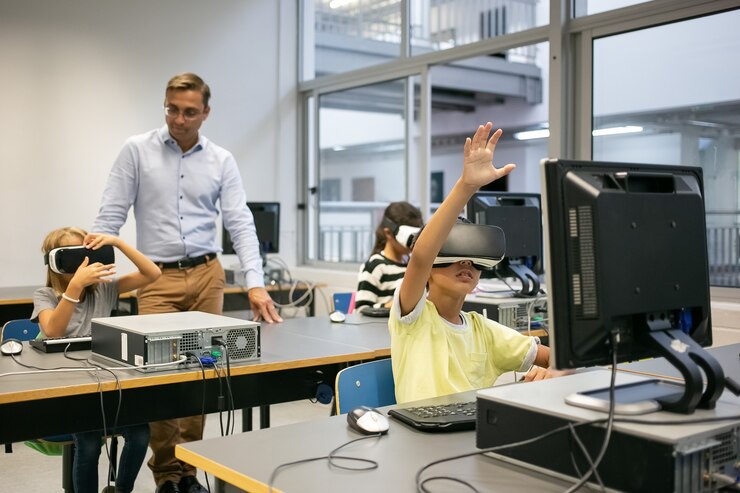Exploring the Future of Education: Will Technology Ever Replace Teachers in the Classroom?
Education is on the cusp of a major transformation, driven by advances in technology. Artificial intelligence (AI), virtual reality (VR), and other technologies are already being used in classrooms around the world, and their impact is only going to grow in the years to come.
One of the biggest questions on the minds of educators and parents alike is whether technology will ever replace teachers in the classroom. The short answer is no, it is unlikely that technology will ever completely replace teachers. However, technology will play an increasingly important role in education, and teachers will need to adapt to this new landscape.
Here are some of the ways that technology is already changing education:
- AI-powered tutoring systems can provide students with personalized instruction at their own pace.
- Online learning platforms allow students to access high-quality educational resources from anywhere in the world.
- VR and augmented reality (AR) can be used to create immersive learning experiences that bring concepts to life.
These technologies have the potential to revolutionize education, making it more accessible, personalized, and engaging for all students. However, it is important to note that technology is just a tool. It is up to teachers to use technology effectively to support student learning.
Teachers play a vital role in education that cannot be replaced by technology. Teachers provide students with social-emotional support, mentorship, and guidance. Meanwhile, they also help students to develop critical thinking skills and learn how to learn.
In the future, teachers will need to take on new roles as technology becomes more integrated into the classroom. For example, teachers may become more like learning facilitators, helping students navigate the vast amount of information available online. Teachers may also need to develop new skills, such as using AI-powered tutoring systems and VR/AR experiences effectively.
Overall, technology is likely to have a positive impact on education, but it is important to remember that it is just a tool. Teachers will continue to play a vital role in the classroom, helping students to learn and grow.
Here are some specific examples of how teachers can use technology to enhance student learning:
- Use AI-powered tutoring systems to provide students with personalized instruction and support.
- Use online learning platforms to create flipped classrooms, where students learn new concepts at home and come to class to practice and collaborate with their peers.
- Use VR and AR to create immersive learning experiences that bring concepts to life.
- Use technology to create collaborative learning environments, where students can work together on projects and assignments.
- Use technology to assess student learning and provide feedback in real-time.
In the exploration of the future of education, it becomes evident that while technology has transformed and will continue to shape the educational landscape, the complete replacement of teachers is unlikely. The synergy between technology and human interaction holds the key to a balanced and effective education system. So, Striking the right balance ensures that students benefit from the advantages of technology while still experiencing the irreplaceable impact of dedicated, compassionate educators. As we march into the future, the collaboration between technology and teachers may well define the next chapter in the evolution of education.
